On a dark night in September of 1792, someone made off with the 69 carat French Blue diamond. Confiscated from King Louis XVI by the revolutionaries of the French National Assembly, the gem, along with the rest of the French Crown Jewels, had been secreted in a royal storehouse for safe keeping. Many of the gems stolen that night were subsequently recovered by the French government. The French Blue was never seen or heard of again.
In September of 1812, a deep blue diamond weighing 177 grains (44.25 carats) was reported in the possession of London diamond merchant, Daniel Eliason. In 1830 this stone, now listed at its correct weight of 44.52 carats, became part of the collection of the Anglo-Dutch financier Henry Philip Hope. Most scholars have come to believe that the Hope Diamond is a recut version of the original French Blue.
Why would anyone recut one of the world’s most valuable diamonds and sacrifice twenty-four very pricey carats? Blue diamonds, whether measured by size or weight, are one of the world’s most valuable substances. Due to diamond’s extremely tight atomic bonding, rarely are color causing chemical impurities such as boron, the element responsible for the blue color, able to work their way into the diamond’s pure carbon crystal structure. Even at its reduced state, The Hope is the largest gem-quality blue diamond known and is worth, depending upon whom you ask, somewhere between fifty and two hundred million dollars.
Is the Hope Diamond truly the remains of the French Blue and if so, when was it recut, why and by whom? High tech computer modeling coupled with some remarkable detective work may provide a final answer to both questions. In January of 2007, François Farges, Curator of the gem collection of the Museum National d’Histoire Naturelle (Paris), located a lead model of the original French Blue diamond along with the model of another famous stone, the Mirror of Portugal.
 Figure 2: Lead model of the French Blue Diamond found in the archives of the Museum National d’Histoire Naturelle (Paris). Image courtesy of that institution.
Figure 2: Lead model of the French Blue Diamond found in the archives of the Museum National d’Histoire Naturelle (Paris). Image courtesy of that institution. This was no random search; Farges knew exactly what he was looking for. Entries in the museum’s log book show that these models were donated to the museum in 1850 by Charles Archard, the scion of a famous family of French gem cutters. A label found with the lead model translates as :
“Model of a remarkably limpid diamond belonging to Mr Hoppe of London.”
 Figure 3: A scan of the original label associated with the lead
Figure 3: A scan of the original label associated with the lead model of the French Blue: Courtesy: Museum National d’Histoire Naturelle (Paris).
 Figure 4: Computer model of the Hope Diamond (solid blue) shown within the outline of the original French Blue diamond. Courtesy: Museum National d’Histoire Naturelle (Paris).
Figure 4: Computer model of the Hope Diamond (solid blue) shown within the outline of the original French Blue diamond. Courtesy: Museum National d’Histoire Naturelle (Paris). Both show a face-up only view.
Using information from the newly discovered lead model, lapidary/historian Scott Sucher created a computer model and a precise replica which appears to remove all doubt as to the connection between the Hope and the French Blue.
Since scholars first came to believe that the Hope was cut from the French Blue, there have been persistent rumors that two smaller diamonds were cut from the Blue, accounting for a few of those precious missing carats. Computer modeling has put an end to that claim as well .
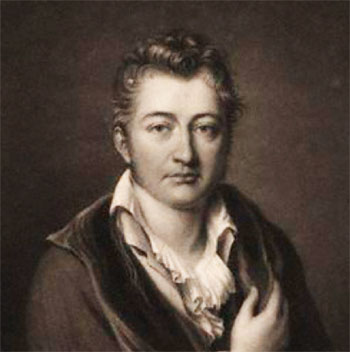 Figure 5: Financier Henry Philip Hope
Figure 5: Financier Henry Philip Hope
Sometime between 1791 and 1812 the stolen French Blue became the Hope Diamond. What remains a mystery is the identity of the person or persons who ordered the recut and their motives for recutting the gem. The discovery of the lead model, together with its accompanying telltale label, strongly suggests that the French Blue came into the possession of Henry Philip Hope and was recut on his orders, but before we pursue that intriguing theory, a little bit of history.
Cheap at Twice the Price:
First there was the Tavernier Blue! At some point, prior to 1668, French merchant
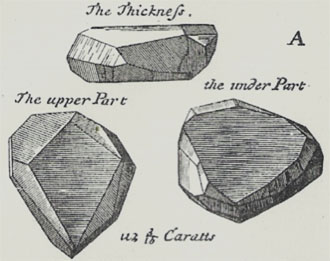 Figure 6: Tavernier's drawing of the Tavernier Blue from the 2nd English edition of The Six Voyages...
Figure 6: Tavernier's drawing of the Tavernier Blue from the 2nd English edition of The Six Voyages... adventurer Jean-Baptiste Tavernier purchased a 112 carat blue diamond. The probable source, the old diamond workings at Kollur, in the modern Indian Province of Andhra Pradesh. In January 1689 Tavernier sold that gem to Louis XIV for the sum of 220,000 livres of French money, the equivalent today of 147 kilograms of pure gold. Sounds like a lot of money, but if you consider the gem’s real value,
Farges suggests that “Tavernier gave his king a very good deal. ”
Shortly after agreeing to purchase the Tavernier Blue (together with 990 other diamonds), King Louis granted Tavernier a patent of nobility. Although most writers simply accept the official government statement that Tavernier received this honor for services to the crown, but I believe that it was what today we would call the “spin”.
“I still can’t believe it.”
“Believe it, what do you mean, my dear?”
“Colbert played me, played me like a violin, I must be getting old.”
“Oh, Jean, don’t be ridiculous. To be raised to the nobility---it is a wonderful coup. You know what such things cost.” The French Blue, p.478
Finance Minister Jean-Baptiste Colbert, with the connivance of His Majesty, ran a lively business selling offices to raise money to support the Sun King’s lavish lifestyle . Nouveau riche members of the middle class could buy a post of Sécretaire du Roi for 25,000 livres and an office in parliament for 120,000 . The highest and most expensive office was an outright patent of nobility. An elevation to noble status sold for between 400-500,000 livres.
Tavernier was not known for selling cheaply. From his own book, The Six Voyages, it is clear that the French gem merchant held out for high prices for his gems. Tavernier did business with some of the greatest monarchs of his age and did not allow himself to be intimidated by powerful men.
Colbert was a notorious skinflint and though Tavernier was a trusted advisor on East Indian affairs, it is doubtful that the king’s finance minister would have dispensed such a high honor without a quid pro quo. It is more than probable, given the timing and the low price paid for the blue diamond, that the patent of nobility was part of the deal. Farges states that the Tavernier Blue was worth twice what Louis XIV paid. I think that Farges, too, underestimates the real value of the diamond.
Pierre’s cup slammed onto the table, his eyes widened, his face turned red and he began coughing. He looked as if he would choke on his wine. “Five millions?”
I pounded his back. “Are you all right?”
“Yes, yes, I am sorry, Jean Baptiste, but five millions?”
“I don’t expect to get nearly that much.”
The French Blue, p.454
Tavernier laid down a formula, known as Tavernier’s Law, which he believed could be used to value a diamond of any size . First determine the value of a similar stone of one carat size, then multiply that price times the square of the weight of the diamond to be priced. The Great Mogul’s Diamond, as described by Tavernier, was “a gem of the finest water.” With one small flaw near its edge, Tavernier discounts its value from 160 livres for a perfect gem to 150 livres per carat. A flawless diamond of a slightly yellow color (water inclining to citron) he values at 135 livres. Tavernier knew that a blue diamond was far rarer than a yellow and both he and the 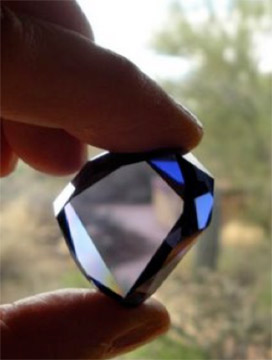 king’s experts described the Tavernier Blue as without flaw. Even so, using Tavernier’s formula and plugging in the value of a yellow one carat (113 x 113) x 135 we get a value of 1,723,815 livres for the Tavernier Blue and that, of course, is a wholesale price. If we then take the Tavernier Blue’s stated price (220,000 livres) and add the going price of a patent of nobility, we get a total price of 720,000 livres. Thus Tavernier received less than half his estimation of the Blue’s value.
king’s experts described the Tavernier Blue as without flaw. Even so, using Tavernier’s formula and plugging in the value of a yellow one carat (113 x 113) x 135 we get a value of 1,723,815 livres for the Tavernier Blue and that, of course, is a wholesale price. If we then take the Tavernier Blue’s stated price (220,000 livres) and add the going price of a patent of nobility, we get a total price of 720,000 livres. Thus Tavernier received less than half his estimation of the Blue’s value.
Why did he accept so little? Tavernier was 62 years old when he returned from his sixth voyage. By his own estimate he had traveled over 180,000 miles in his forty years as a trader. At that time, Louis XIV was the richest, most powerful monarch in Europe. England was virtually bankrupt, Portugal had been run out of the East Indies, and Spain had been beggared by the Thirty Years’ War. Although there was an avid competition between monarchs to acquire fine large gems, it is doubtful that any ruler in Europe could or would have come up with the equivalent of 1,151 kilos of pure gold to meet Tavernier’s estimate of the Blue’s true value or beaten the Sun King’s offer. Finally, Tavernier was a Frenchman and a canny businessman who understood the value of good publicity. To sell the blue diamond to the Sun King and to have that generally known would contribute to his fame and enhance his business.
In 1691, Louis XIV commissioned his court jeweler, Jean Pitau, to recut Tavernier’s great blue diamond. The result was a much enhanced, brilliant, sixty-nine carat gem, Colbert named the gem “le diamant blue de la couronne de France,” or simply the French Blue. This was the diamond stolen from the royal storehouse in 1792.
Fast Forward 2007---Mystery Solved:
Farges maintains that the label attached to the recently located lead replica of the French Blue provides key evidence which “suggests” that Henry Philip Hope acquired the diamond and had the gem recut into what has become known as the Hope Diamond . Knowing the “who” tells us a great deal about the “why”!
Hope (1735-1811), through his family firm, Hope & Company, was a major player in European finance. It was Hope & Company that put together the deal which financed the Louisiana Purchase. Hope was also involved in the gem trade. Hope & Company negotiated a deal with Portugal which gave the company the exclusive right to sell Brazilian diamonds in Antwerp. An avid gem collector, Hope was well situated to know of any major diamonds available in the market. Archard, the man who donated the lead model and Eliason the London dealer who had the Hope is his possession in 1812 were both clients of Hope & Company.
In 1804 Napoleon declared a twenty-year statute of limitations on crimes committed during the French Revolution. The theft of the Crown Jewels took place in 1792. The statute of limitations on the theft of the French Blue ran out in 1812, just a few days before the recut diamond showed up in the London market.
Napoleon was obsessed with recovering all the French Crown Jewels and the Emperor of the French was not one to allow legal niceties, even his own statute of limitations, to stand between himself and his desires. If the French Blue had shown up anywhere for sale even after the
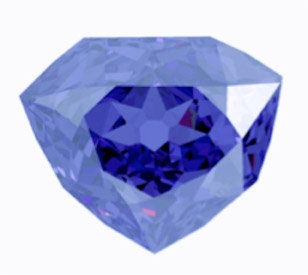 Figure 9: The cubic Zirconium replica (/Figure 8/) cut by Sucher exhibits dramatic light leakage beneath the center (table) of the stone. However the actual French Blue diamond, due to its higher refractive index (the angle at which light bends upon entering a gemstone), would not have exhibited a window.
Figure 9: The cubic Zirconium replica (/Figure 8/) cut by Sucher exhibits dramatic light leakage beneath the center (table) of the stone. However the actual French Blue diamond, due to its higher refractive index (the angle at which light bends upon entering a gemstone), would not have exhibited a window.statute of limitations had run out, it would have brought the wrath of Napoleon Bonaparte, at that time the world’s most powerful monarch, down upon the head of whoever possessed it.
Napoleon’s obsession provided a powerful motive---one sufficient to prompt Henry Philip Hope to recut the gem in an attempt to disguise it. In Sucher’s opinion, the French Blue was far more beautiful than the Hope. Sucher believes that the gem was deliberately recut in a manner so as to darken its color. The pavilion facets were offset to cause light leakage and deepen the blue tone. The Hope has been described as a “deep sapphire blue". This is a bit wide of the mark. The stone is actually an “inky” deep grayish blue under the light bulb . Had the pavilion facets been properly oriented, the color would have been a lighter toned and the gem more brilliant. This only makes sense as a conscious strategy to cloak the identity of the stone.
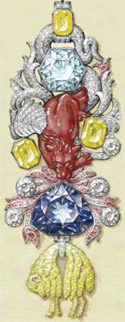
Figure 10: The Medal of the Order of The Golden Fleece with (top to bottom)The Bazu Diamond, The Côte de Bretagne spinel and The French Blue diamond
Thus ends the mystery of the origin of the Hope Diamond. Sometime after the theft from the royal storehouse in 1792, Henry Philip Hope acquired the French Blue Diamond. Napoleon was a client of Hope & Company, and though weakened by his disastrous Russian campaign, was still in 1812, far too powerful a man for Hope to offend. Henry Philip Hope, the canny financier hedged his bets. He acquired the French Blue had it recut to hide its identity, and for extra insurance kept it under wraps until Napoleon’s statute of limitations ran out.
The Sun King had worn the French Blue, as a hat pin. His grandson, Louis XIV, had the stone set, along with the Bazu Diamond and the Côte de Bretagne spinel, in the medal of The Knightly Order of the Golden Fleece and wore it on state occasions.
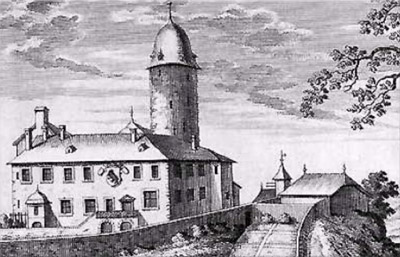 Figure 11: Chateau Aubonne showing the Oriental tower added by J. B. Tavernier to remind him of Persia
Figure 11: Chateau Aubonne showing the Oriental tower added by J. B. Tavernier to remind him of Persia The rest of the story has been told many times. The diamond passed through the Hope family through the hands of several dealers to Cartier. From there it went to Evelyn Walsh McLean, Harry Winston and finally to the place in which it now resides, the Smithsonian Institution in Washington, D. C.
As for Jean Baptiste Tavernier, a year after he sold Louis the great blue diamond, he purchased a chateau in the Duchy of Savoy near Lake Geneva and became Baron of Aubonne.

